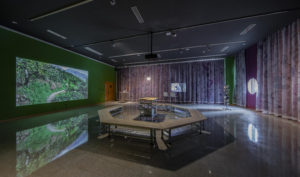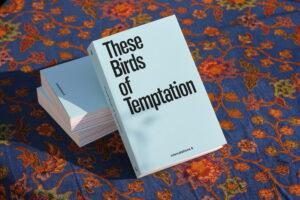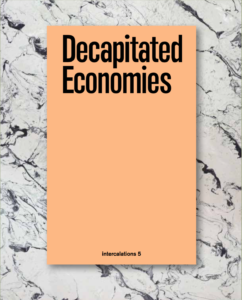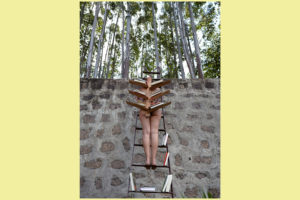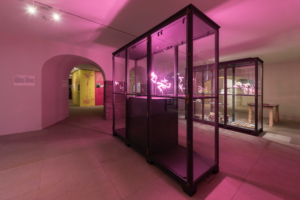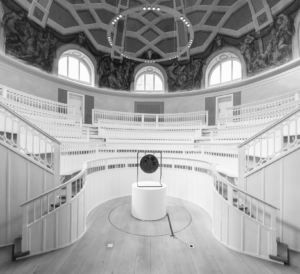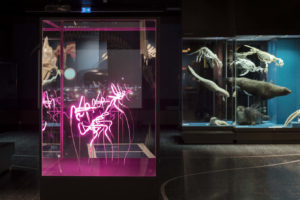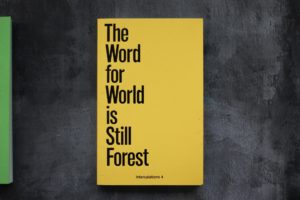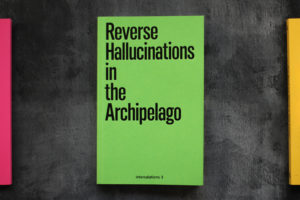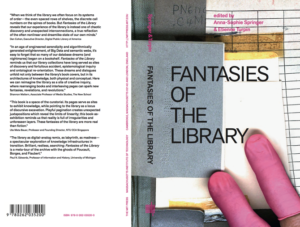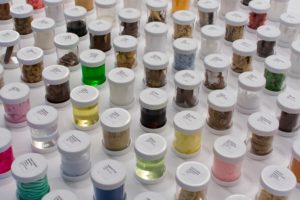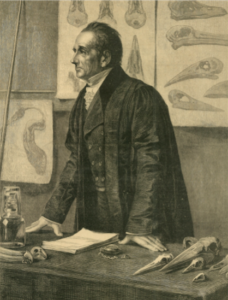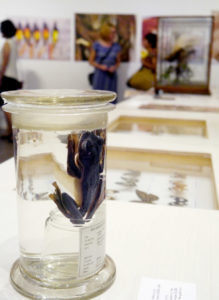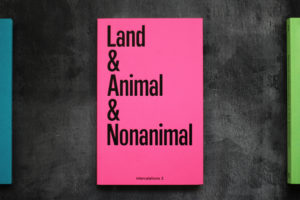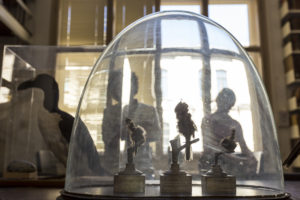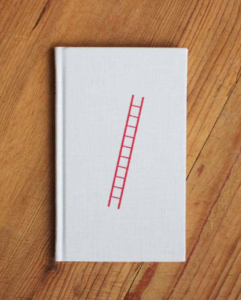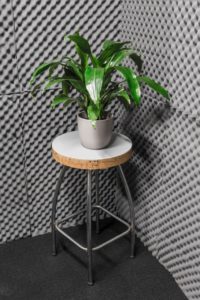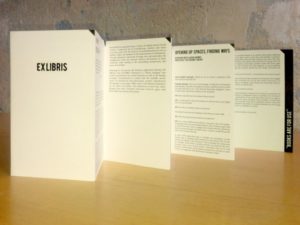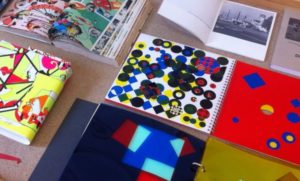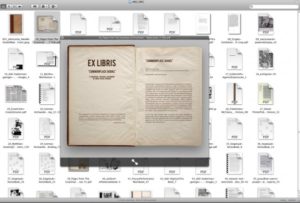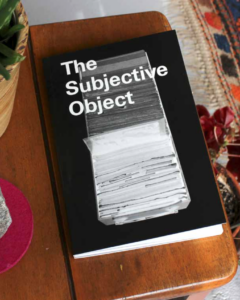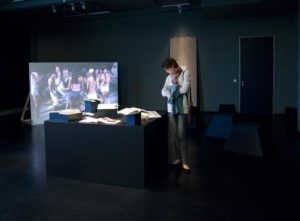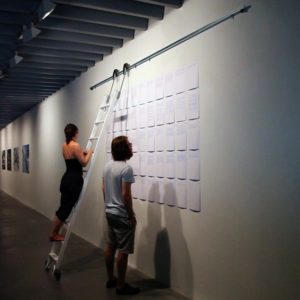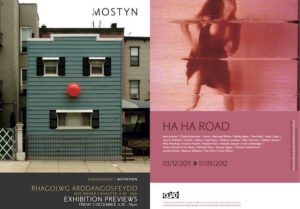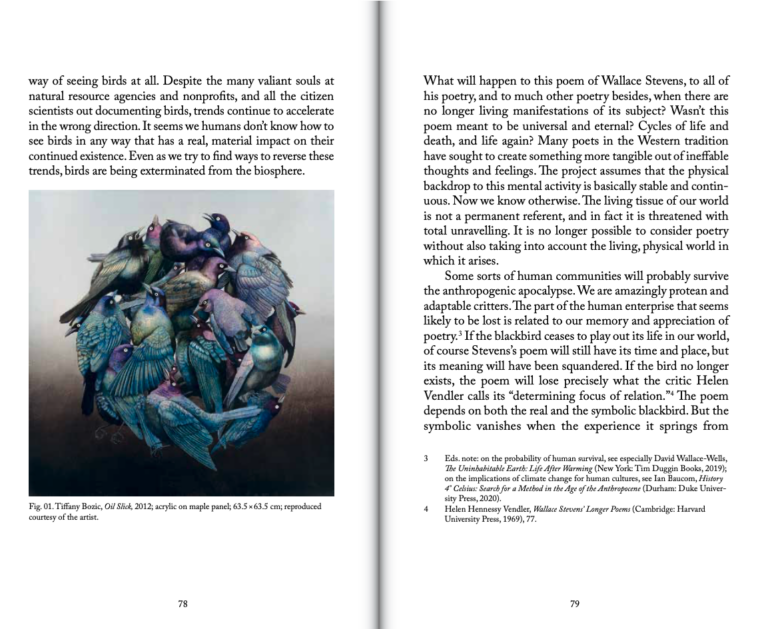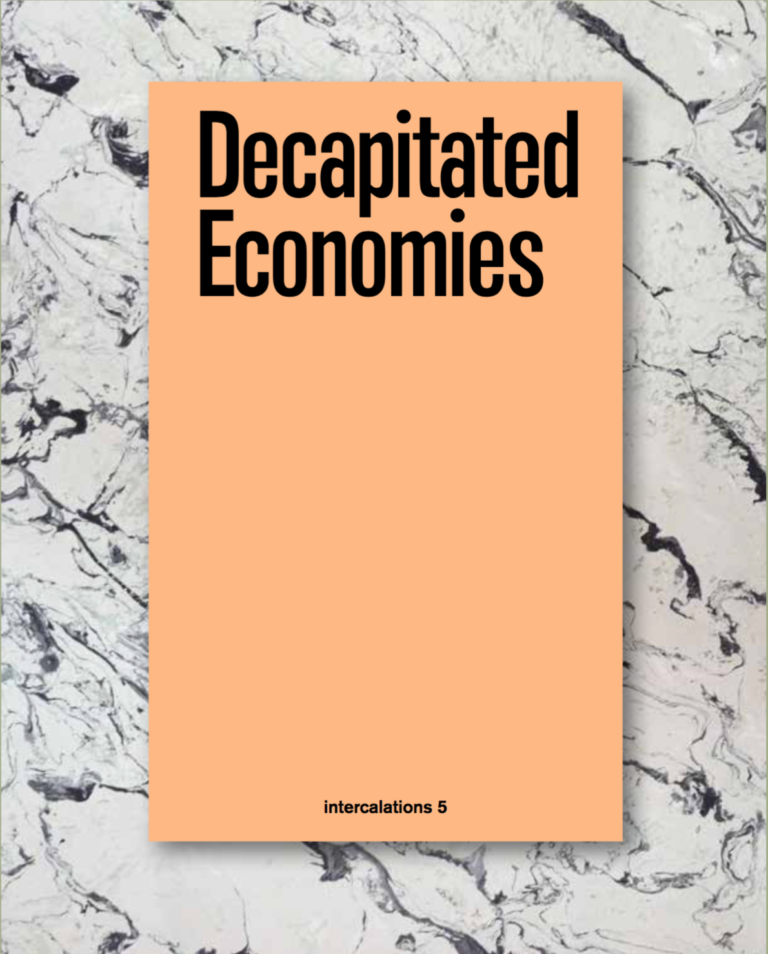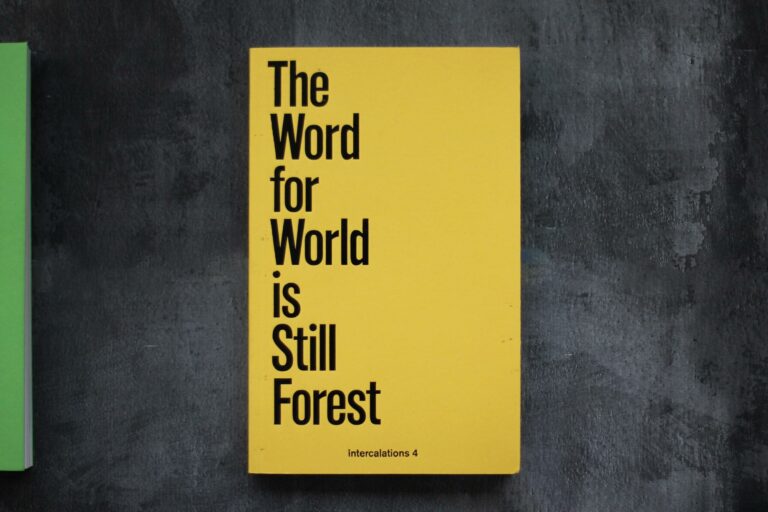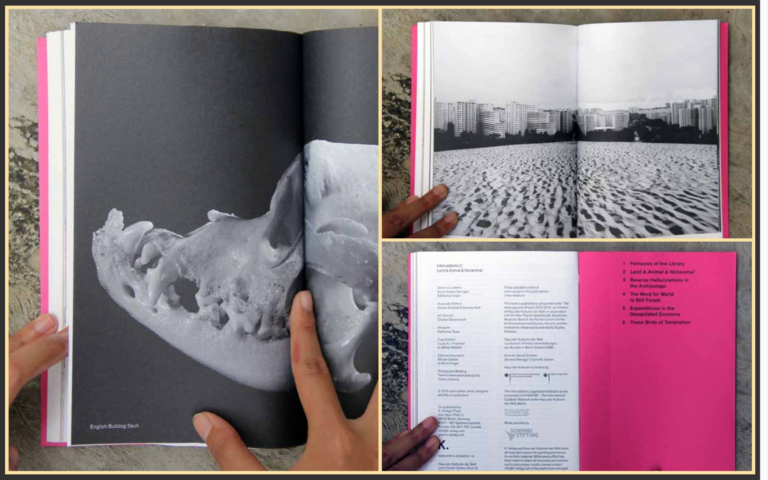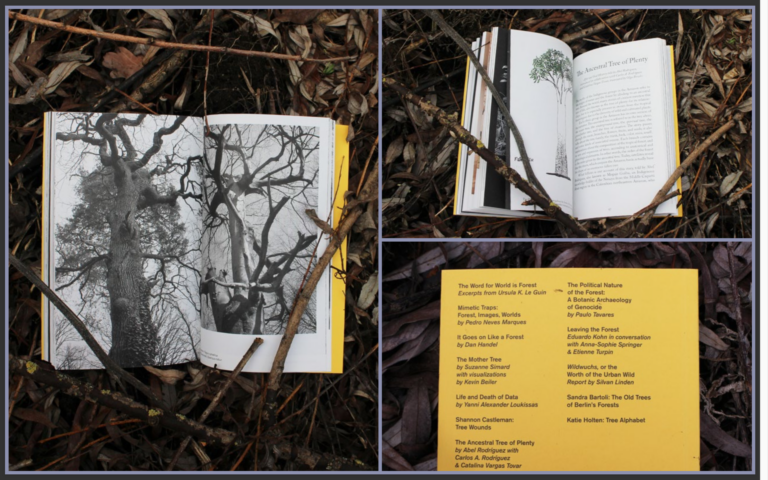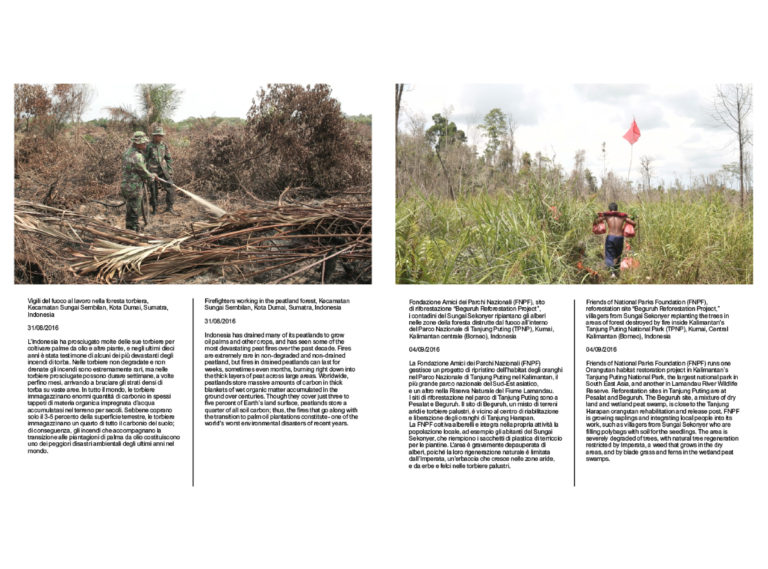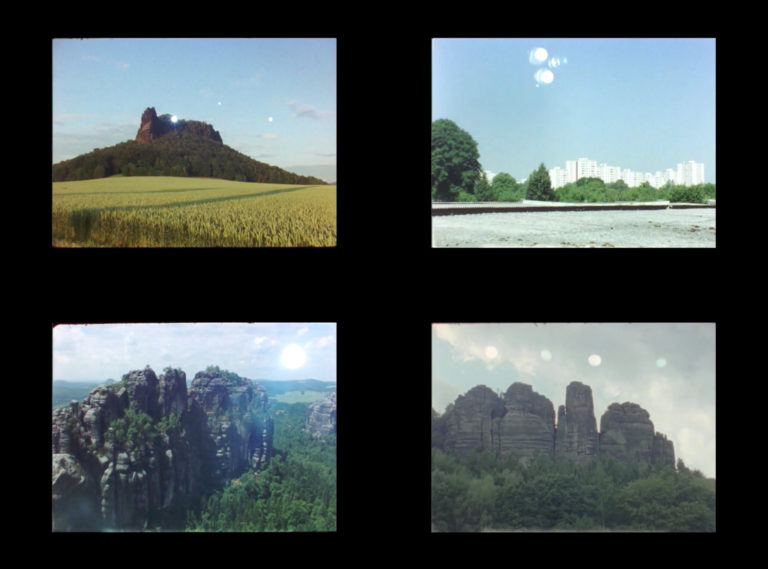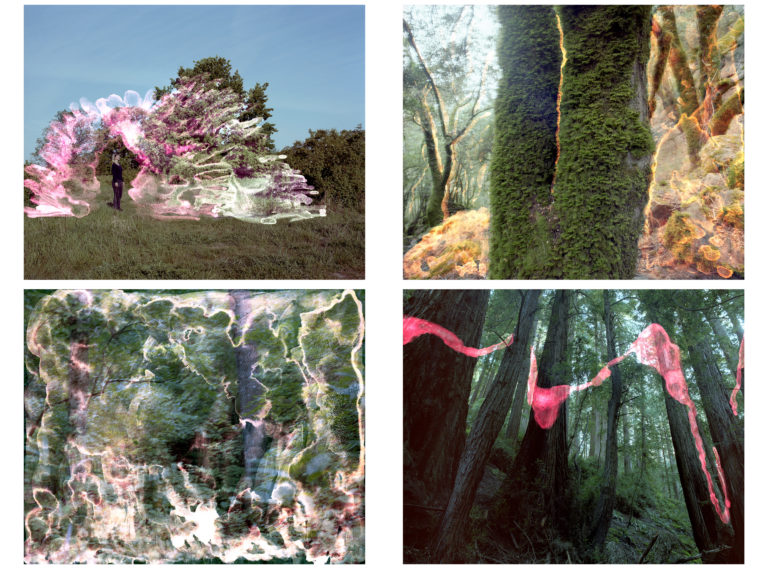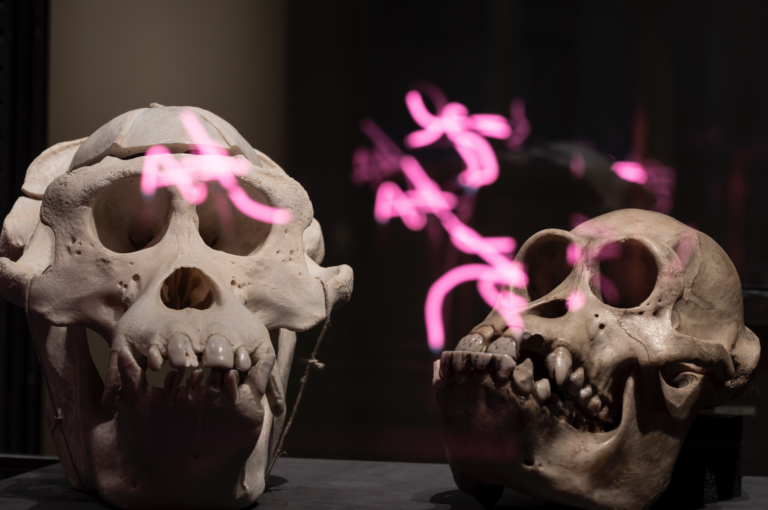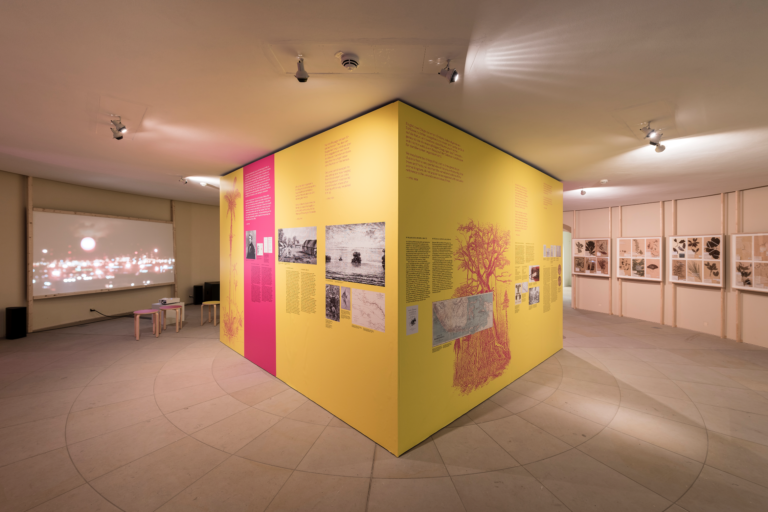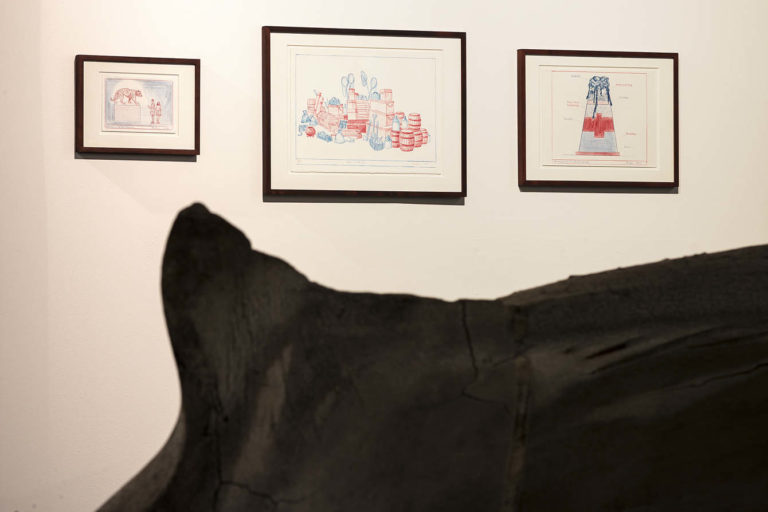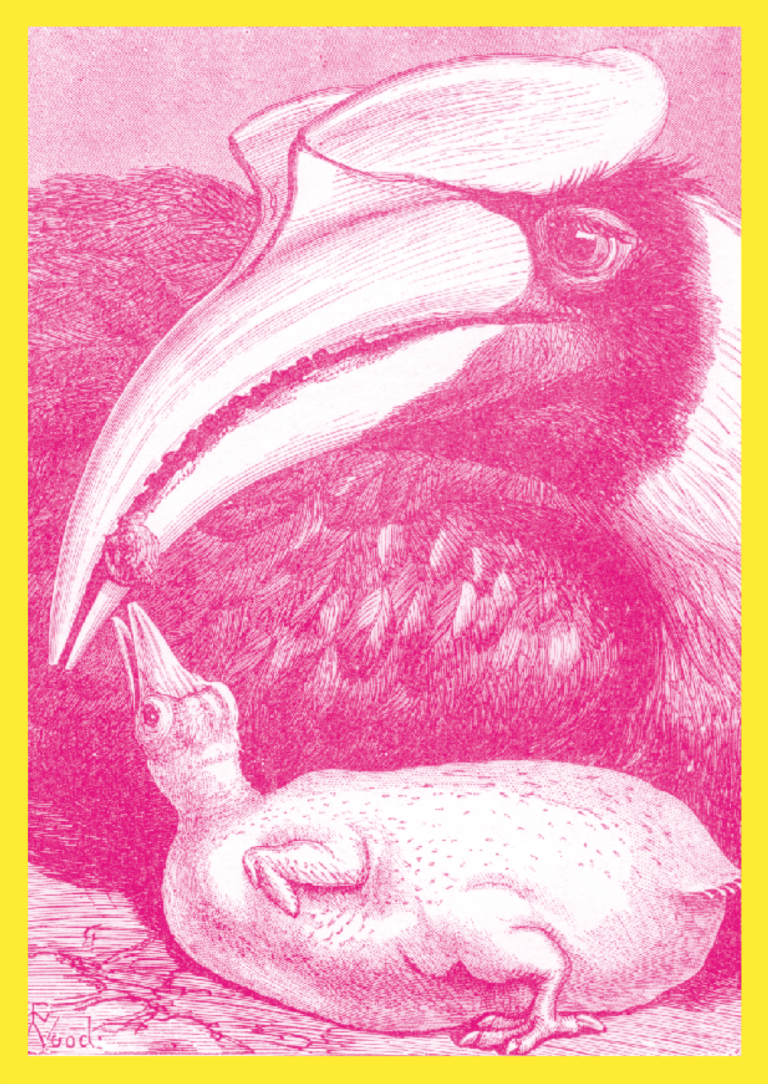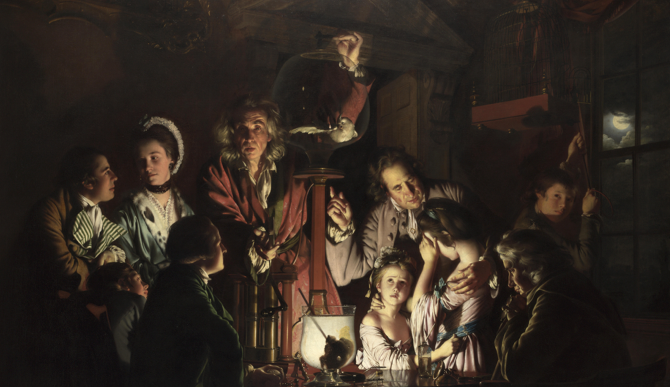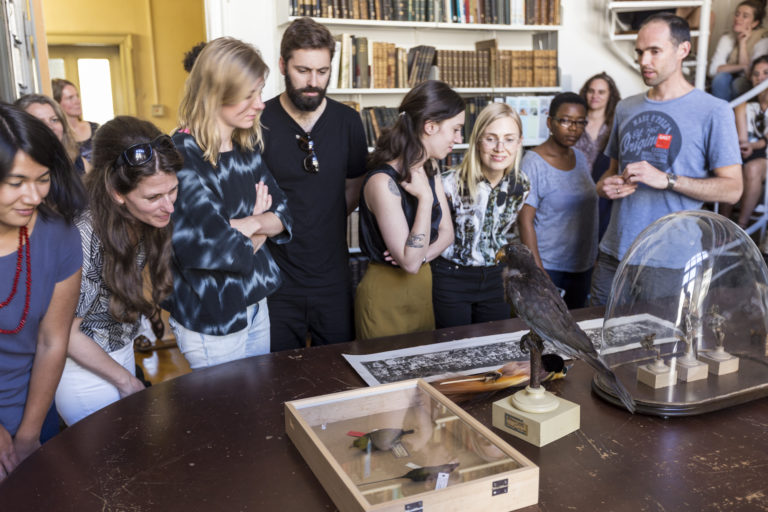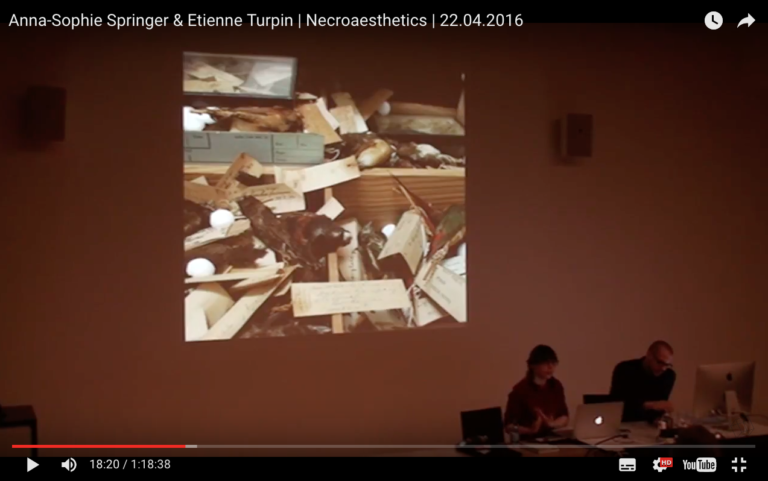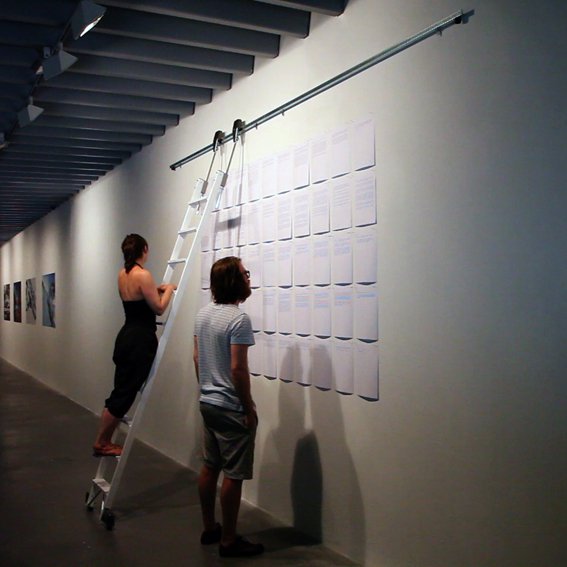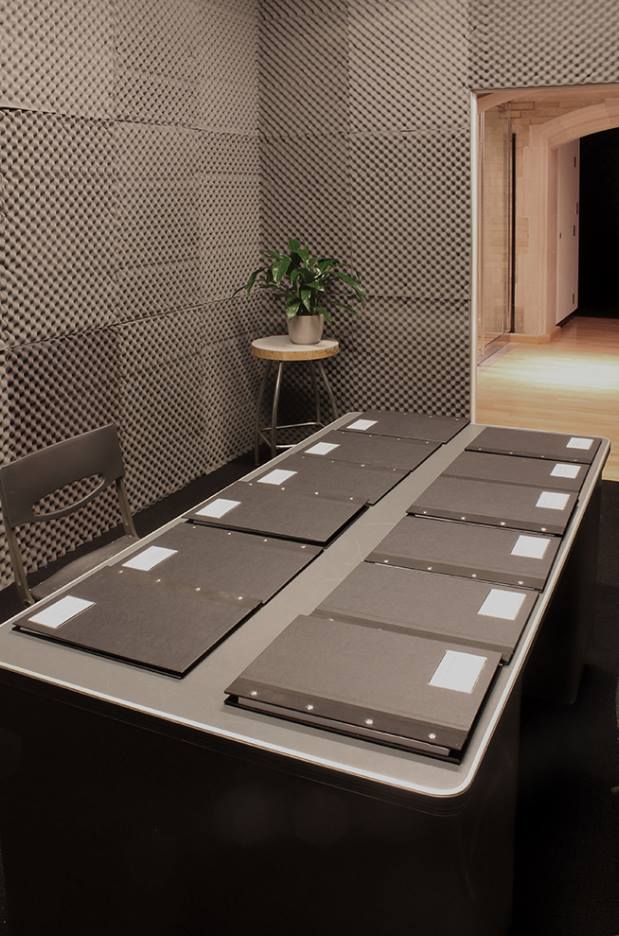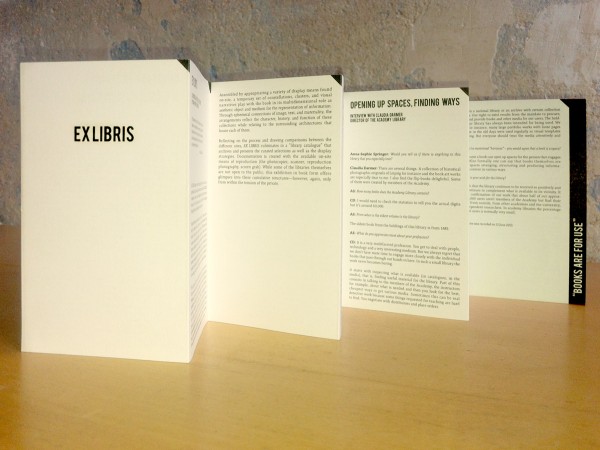Institute of Contemporary Arts (ICA)
at New York University Shanghai
25 March – 29 May 2021
With
- Agency
- Anne Duk Hee Jordan
with Pauline Doutreluingne - John Feldman
with Lynn Margulis - Mao Chenyu
- Maximilian Prüfer
- Monika Lin
with Zaanheh Project
In a recent essay addressing the intersectional frictions of the novel coronavirus pandemic, the climate crisis, and recent microbiome research, the philosopher Tobias Rees remarked, “We humans are really little more than a multi-species ecosystem among multi-species ecosystems—ponds among ponds.” Borrowing this as an umbrella term for rethinking the relationship between organisms and their various endo- and exo-somatic ecologies, ponds among ponds: an exhibition of threshold behavior & nested life proposes an alternative approach to the presentation of natural history. Instead of beginning from the assumption that the organism is the basic unit of evolution, what if we consider the multi-scalar, nested ecologies of life as symbiotic sequences that challenge ideas of competition and survival of the fittest? The fundamental proposition of ponds among ponds is that the current concept of organismic life is insufficient for thinking with and adapting to contemporary climate and biodiversity crises.
Thinking with the pathbreaking work of evolutionary biologist Lynn Margulis (1938–2011), ponds among ponds presents objects, images, texts, performances, and movements through artistic points of view, troubling current forms and proposing other organizations of life. The concept of “threshold behavior” contends that all organisms are ecologies unto themselves that operate as assemblages ordered and kept alive by various environmental gradients. While “nested life” challenges the predominant image of climate change as an eventuality wherein an organism (typically, a human organism), as a unit of coherent and sovereign volition, struggles against the outside forces of nature. Such an impoverished sense of threshold behavior leads to a repetition without difference. Instead, in order to begin to conceive of, and thereby adapt to, the massive challenges of climate change (and the no less imperiling situation of biodiversity destruction), it is necessary to imagine the human, and the organism, as ecologies within ecologies, or ponds among ponds.
Central to the exhibition, in its performance-installation, Brussels-based Agency calls forth gatherings and discussion around controversial intellectual property cases, raising questions such as: are living things patentable subject matter? A video by Maximilian Prüfer explores the consequences of environmental destruction upon the pollination process within agriculture, while Berlin-based artist Anne Duk Hee Jordan, in her collaboration with Pauline Doutreluingne, has developed a multimedia wedding bed-installation, opening a nonlinear perspective on species migration and the botany of desire. Shanghai and Yueyang-based artist Mao Chenyu’s further invokes the figure of the agricultural worker and space-time of Chinese rural society in two films, one of which will premiere at the close of the exhibition. Extending the exhibition out into the city, walking maps designed by Zaanheh Project’s Monika Lin invite visitors to key areas around Shanghai to think with the emergent ecologies of the local watershed. Finally, Reassembling the Natural the exhibition, conceptually and materially, with traces of Lynn Margulis and her collaborators: A curatorial station entitled “Reassembling Symbiosis” includes a documentary film directed by John Feldman exploring her life and ideas (accessible online throughout the duration of the exhibition); the gallery is also lined with curtains (entitled “Reassembling the Outside”), designed by Anna-Sophie Springer and Etienne Turpin in collaboration with Wolfgang Hückel and produced by the ICA team, which prompt visitors to imagine the gallery as a symbiont with the city of Shanghai, imagining the curtain as a permeable membrane between inside and outside, art and nature.
For ponds among ponds, exhibition curators Springer and Turpin (Reassembling the Natural) have worked with the ICA at NYU Shanghai to engage with local collections, museums, and related sites of scientific research, as well as artists and cultural producers. By bringing these respective objects of research together in one exhibition space, their project continues to work across disciplines and develop new modes of spatial juxtaposition and curatorial montage that enable scientific and aesthetic practices of inquiry to inform one another.
ponds among ponds: an exhibition of threshold behavior & nested life and its related events are presented as the final season of The (Invisible) Garden, the ICA’s 2019–21 artistic research program that inquires into the garden as a method that shapes our understanding of Nature and our relationships to other species. From Fall 2019 through Spring 2021, the ICA at NYU Shanghai presents artists, thinkers, and practitioners, through exhibitions and events, to consider the garden and ask how might we denature Nature?
The exhibition was curated by Anna-Sophie Springer & Etienne Turpin (Reassembling the Natural), and was organized by ICA director & curator Michelle Yeonho Hyun with Zhu Sicong, who were assisted by Chen Yijiao, Wang Yuxin, Chen Yindi, and Qin Xiaoyan.
Documents & Resources
- ica.shanghai.nyu.edu/ponds-among-ponds/exhibition&events
- Exhibition poster and curatorial essay (PDF in English & Chinese)
- Exhibition floorplan and artwork contextualizations (PDF in English & Chinese)
- Press release (PDF in English & Chinese)
- “From the Anthropocene to the Microbiocene,” essay by Tobias Rees in Noema, 2020
- Read an article about the exhibition & its concerns on the NYU website
Related Events in the Gallery & Online
ponds among ponds: an exhibition of threshold behavior & nested life is accompanied by related events, including:
VIRTUAL SCREENING: Symbiotic Earth
20 March –29 May
Online
The documentary film Symbiotic Earth (dir. John Feldman, 2018) explores the life and ideas of evolutionary biologist Lynn Margulis, whose unconventional theories challenged the male-dominated scientific community and are today fundamentally changing how we look at ourselves, evolution, and the environment.
The film is available for screening online one week prior to and throughout the exhibition period. English with Chinese subtitles.
TALK: Roundtable with curators, artists, & scientists
Sat, 27 Mar, 16:00–17:30 CST
Online Chinese and English
Join the curators and artists in conversation with scientists from NYU Shanghai, DONG Ningning (Fudan University), Sascha Krause (East China Normal University), PAN Yan (Fudan University), and ZHANG Minhua (East China Normal University), as they discuss the exhibition ponds among ponds and film Symbiotic Earth. The lm is available for screening online one week prior to the roundtable discussion, starting on 20 March.
PERFORMANCE: Agency
Agency is an international initiative founded by Kobe Matthys that has o ces in Brussels. Since 1992, Agency constitutes a growing “list of boundary things” mostly derived from judicial cases and controversies involving intellectual property. Agency calls these boundary things forth via varying “assemblies” such as exhibitions, performances, and publications. For Assembly (ponds among ponds), Agency calls an assembly where a group of concerned from various back- grounds related to the case will be invited to respond to the controversy it raises. This assembly is not meant to re-enact the judgment, but rather to evoke the hesitation experienced in court.
Assembly (ponds among ponds)
Sat, 17 Apr, 16:00–18:00 CST
Online (link coming soon)
English with Chinese interpretation
Agency calls forth from its list Thing 000773 (Pseudomonas). For thousands of years cow dung slurry has been used in India in rituals to clean houses. In 1971, microbiologist Ananda Chakrabarty grew bacteria (of the pseudomonas family) by genetic transfer, which he hoped would be used to clean oil spills, and in 1972, he filed for a patent application. The case eventually appeared before the highest court in the US, raising the question: are “living things” patentable subject matter?
Assembly (ponds among ponds)
Sat, 15 May, 16:00–18:00 CST Gallery (limited seating)
Chinese with English interpretation
Agency calls forth an assembly for a newly researched case, which has been developed specifically for ponds among ponds at the ICA at NYU Shanghai. Please register by 7 May to reserve a seat.
SCREENING & TALK: Anti-Rural China
22–29 May (virtual screening; link coming soon)
Sat, 29 May, 15:00 CST (in-person screening in the Gallery; limited seating; Chinese with English subtitles Sat, 29 May, 16:00–17:00 CST (conversation; online & ICA GAllery; Chinese with English interpretation)
Watch the premiere of Mao Chenyu’s newest film, Anti-Rural China (2021), followed by a conversation with the filmmaker, curators, and theoretician Lu Xinghua. In response to Fei Xiaotong’s once banned and now widely-read study of Chinese rural society, From the Soil (1947), Mao questions From the Soil’s legacy, asking how to think about the rural reality of China today and open up thinking for the future?
Anti-Rural China is available for screening online one week prior to the conversation. Online viewers are welcome to join the 29 May conversation via live stream.The film will also be screened in person, in the ICA gallery, followed immediately by a conversation with the filmmaker. Please register by 21 May to reserve a seat.
As with every season, the ICA will host Study Sessions on 8 April and 29 April at 13:00 in the ICA gallery. ICA Study Sessions are guided conversations focusing on one work in one hour, based on curious exploration, critical reflection, and collective meaning making.
Registration is required for all events.
Exhibition Colophon
Participanting Artists
- Agency
- Anne Duk Hee Jordan
with Pauline Doutreluingne - John Feldman
with Lynn Margulis - Mao Chenyu
- Maximilian Prüfer
- Monika Lin
with Zaanheh Project
Scientific Interlocutors
- Dong Ningning (Fudan University)
- Sascha Krause (East China Normal University)
- Pan Yan (Fudan University)
- WANG Zhenghuan (East China Normal University)
- Zhang Minhua (East China Normal University)
Curators, Team & Collaborators
ponds among ponds was curated by Anna-Sophie Springer & Etienne Turpin, and was organized by Michelle Yeonho Hyun with Zhu Sicong, who were assisted by Chen Yijiao, Wang Yuxin, Chen Yindi, and Qin Xiaoyan. Additional assistance by Lina Jin from NYU Shanghai Teaching Labs and He Zhuqing from the Biological History Museum of East China Normal University. Design by the curators in collaboration with Wolfgang Hückel and The Exercises / Lu Liang with Selina Landis.
ponds among ponds: an exhibition of threshold behaviour & nested life and its related events are presented as the final season of The (Invisible) Garden, the ICA’s 2019–21 artistic research program that inquires into the garden as a method that shapes our understanding of Nature and our relationships to other species. From Fall 2019 through Spring 2021, the ICA at NYU Shanghai presents artists, thinkers, and practitioners, through exhibitions and events, to consider the garden and ask how might we denature Nature?
Select artworks and projects in the exhibition have been generously supported by: in part, the Consulate General of the Federal Republic of Germany and the Flanders Ministry of Culture, Youth, and Media; and, in kind, the Taipei Fine Arts Museum.
Thank You :
Reassembling the Natural thanks Michelle Yeonho Hyun for the generous invitation and meticulous production over long distance throughout a year and a half of pandemic chaos. We also thank the ICA team, above all Zhu Sicong, for their tireless research and production support, as well as all participating artists, scientists, and contributors, and all staff, fabricators, technicians, and translators of NYU Shanghai who helped make the exhibition happen.
The curators would also like to thank:
Lidia Gasperoni, Martin Guinard, Wolfgang Hückel, Bettina Korintenberg, and Bruno Latour
ponds among ponds was curated by Anna-Sophie Springer & Etienne Turpin, and was organized by ICA director & curator Michelle Yeonho Hyun with Zhu Sicong, who were assisted by Chen Yijiao, Wang Yuxin, Chen Yindi, and Qin Xiaoyan.
